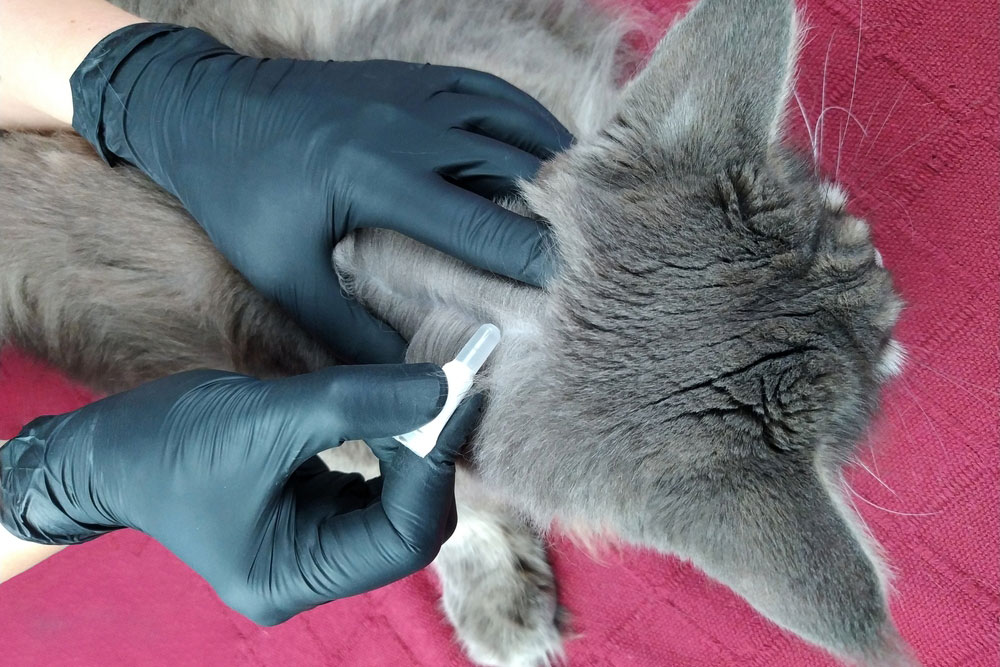Year-Round Defense: Flea, Tick, and Heartworm Prevention for Pets
If you’ve ever watched your pet scratch endlessly or spotted a tick hitching a ride after a walk, you know just how frustrating parasites can be. Fleas, ticks, and heartworms aren’t just seasonal nuisances. They’re year-round threats that can seriously impact your pet’s health- and in some cases, even yours.
At Fort Mill Animal Hospital, we’re here to help you stay one step ahead with prevention plans that are practical, protective, and easy to stick to. A little effort now means fewer health problems- and vet visits- later.
Why Year-Round Prevention Is Essential
One of the biggest myths in parasite control? That you can stop treatment when the weather cools down. Unfortunately, that’s not true- especially in South Carolina, where winters tend to be mild.
Ticks can remain active well into the cooler months, fleas can thrive indoors, and mosquitoes (the vector for heartworm disease) can reappear after just one warm day. In fact, the CAPC heartworm prevalence map shows that cases occur year-round, even in areas with traditional “off seasons.” Skipping prevention, even temporarily, puts your pet at risk.
Flea Fallout: More Than Just Itchy Skin
Fleas aren’t just annoying. Some pets suffer from Flea Allergy Dermatitis (FAD), a hypersensitive reaction that turns a single bite into days or weeks of scratching, hair loss, and skin infections. In young, elderly, or underweight animals, heavy infestations can cause anemia, leading to pale gums, lethargy, and weakness.
Fleas are also a common carrier for tapeworms, which are intestinal parasites shed in your pet’s stool. If you see your pet scooting or find rice-like segments in their bedding or waste, it’s time for a closer look. Learn more about the signs and treatment options from the Merck Veterinary Manual.
Mites: Tiny Pests, Big Problems
Mites are microscopic parasites that can cause serious skin and ear problems in both dogs and cats- but they’re often overlooked because they’re not visible to the naked eye.
Demodex (Demodectic Mange)
Demodex mites live deep in the hair follicles and are usually part of the normal skin flora. However, in pets with immature or compromised immune systems, they can multiply excessively and cause patchy hair loss, redness, and scabbing.
Sarcoptes (Scabies)
Sarcoptic mange is extremely itchy and highly contagious- both to other pets and to people. Dogs (and occasionally cats) with scabies may develop intense scratching, crusting, and hair loss, especially around the ears, elbows, and belly.
Ear Mites
Most common in cats but also seen in dogs, ear mites live in the ear canal and cause intense itching, dark debris, and head shaking. Left untreated, they can lead to secondary ear infections and damage to the ear canal.
For more on how to spot and manage these pests, check out mites on dogs and mites in cats.
Tick Troubles: Bigger Than You Think
Ticks might be hard to spot, but the diseases they carry are nothing to ignore. In dogs, Lyme disease can lead to chronic joint pain, kidney issues, and long-term fatigue. Other common tick-borne diseases include Ehrlichiosis, Anaplasmosis, and Rocky Mountain Spotted Fever.
Ticks can also trigger tick paralysis, a rare but serious condition where a toxin in the tick’s saliva causes progressive weakness. If your pet suddenly seems uncoordinated or weak and has a tick on them, don’t wait- call your vet. To prevent tick-related issues before they start, review the CDC’s tick prevention guide. You can also browse the CAPC’s tick identification guide for help identifying which species you’re dealing with.
Heartworms: Silent and Serious
Mosquitoes are more than a nuisance- they’re the only way heartworm disease spreads. Once bitten, larvae migrate through the body and eventually settle in the heart and lungs, where they can cause lasting damage.
Dogs are the most common hosts, but cats can be affected too. Symptoms include coughing, fatigue, and weight loss in dogs, and sometimes sudden death in cats, even before symptoms appear. Prevention is key- because by the time you see signs, the damage may already be done. The American Heartworm Society offers a great overview of how this disease works and why it’s so important to stay protected year-round.
Intestinal Parasites: An Invisible Threat
Intestinal worms are common in both puppies and kittens, but they can infect adult pets too. Many pets show no signs early on, but over time, parasites like roundworms, hookworms, whipworms, and tapeworms can cause serious digestive and nutritional issues. Watch for diarrhea, vomiting, and weight loss. It’s not unusual to see worms in vomit, feces, or around the anus in heavy infestations. These parasites can also cause anemia and dehydration.
Learn more about the different types and what to do next from the AVMA’s guide to intestinal parasites.
Rare but impactful parasites like lung flukes or trematodes may also show up in pets that spend time outdoors or travel to high-risk regions. If your pet develops unexplained respiratory or GI issues, don’t rule these out.
Hidden Parasites and Zoonotic Concerns
Some parasites don’t stop at pets. Zoonotic parasites– those that can infect people- are a real concern, especially in households with small children, pregnant women, or anyone with a weakened immune system.
Common culprits include:
- Roundworms and Hookworms: Spread through contaminated soil or feces. Children playing barefoot in the backyard are especially at risk.
- Toxoplasma gondii: A parasite shed in cat feces that can pose serious risks to unborn babies and immunocompromised people. For a deep dive into prevention and risk factors, see Cornell’s toxoplasmosis page.
- Giardia and other protozoal parasites: Often waterborne, these can infect people who come in contact with untreated water or infected animal waste.
For an overview of how zoonotic parasites work and what you can do to protect your family, explore Cornell’s zoonotic disease page and TVMF’s zoonotic parasite prevention guide.
Prevention Options at Fort Mill Animal Hospital
We tailor parasite prevention to your pet’s specific needs, age, and lifestyle. Some of our most trusted products include:
- Simparica Trio (Dogs): A once-monthly chew that protects against fleas, ticks, mites, heartworms, and intestinal parasites
- Sentinel Spectrum + Bravecto (Dogs): Combination therapy for dogs who need broader protection
- ProHeart + Bravecto (Dogs): Ideal for owners who can’t remember monthly dosing
- Bravecto Plus (Cats): Topical protection that includes flea, tick, mite, and heartworm defense

Common Questions from Pet Owners
Is year-round prevention really necessary?
Yes. Parasites don’t take vacations, especially in the South. Here’s why year-round protection matters.
Can indoor pets get parasites?
Absolutely. Fleas, ticks, and mosquitoes can come inside on shoes, other pets, or even through open windows.
What happens if I miss a dose?
Give us a call. Depending on the timing, we may recommend restarting your preventative, running a blood test, or both.
Do these parasites affect people too?
Some do. That’s why a prevention plan protects your whole family- not just your pet.
Let’s Build a Plan That Works
Preventing parasites doesn’t have to be complicated or expensive. Whether you have a young, adventurous pup or a senior indoor cat, we’ll help you choose the best products and schedule for their needs. We follow the AAHA/AVMA Canine Preventive Healthcare Guidelines to ensure every pet gets up-to-date care.
Contact us or schedule an appointment to start a prevention plan that keeps your pet safe, healthy, and protected all year long.







Leave A Comment